Tabula Itineraria …Peutingerorum Bibliotheca
by
Abraham Ortelius
A UNIQUE COLLECTION: Very rare and extremely interesting
Detail
Date of first edition: 1619
Date of this map (second and last edition): 1624
Dimensions (not including margins): 4 times +/- 51 x 41 cm
Condition: Excellent. Strong paper and wide margins. The pictures are made when the maps were still framed; so they reflect brown shadow. The maps themselves are much better. We will post each of the four maps individually with verso in the next coming days.
Condition rating: A++
Verso: blank
Map reference: Shirley 212; Van den Broecke 227 to 230; Van den Broecke, “Unstable Editions of Ortelius’ Atlas,” Cartographica Neerlandica, accessed June 27, 2019, http://www.orteliusmaps.com/essays/mapcollector1995.htm.
Price (without VAT, possibly to be added): €20 000,00 (FYI +/- $22 200,00 / £17 800,00)
Unless otherwise specifically stated on this map page, we charge the following expedition costs in euro (unfortunatelly, gone up with Covid, but still too low in reality!):
– Benelux: 40 euro
– Rest of Europe: 60 euro
– Rest of the World: 100 euro
In stock
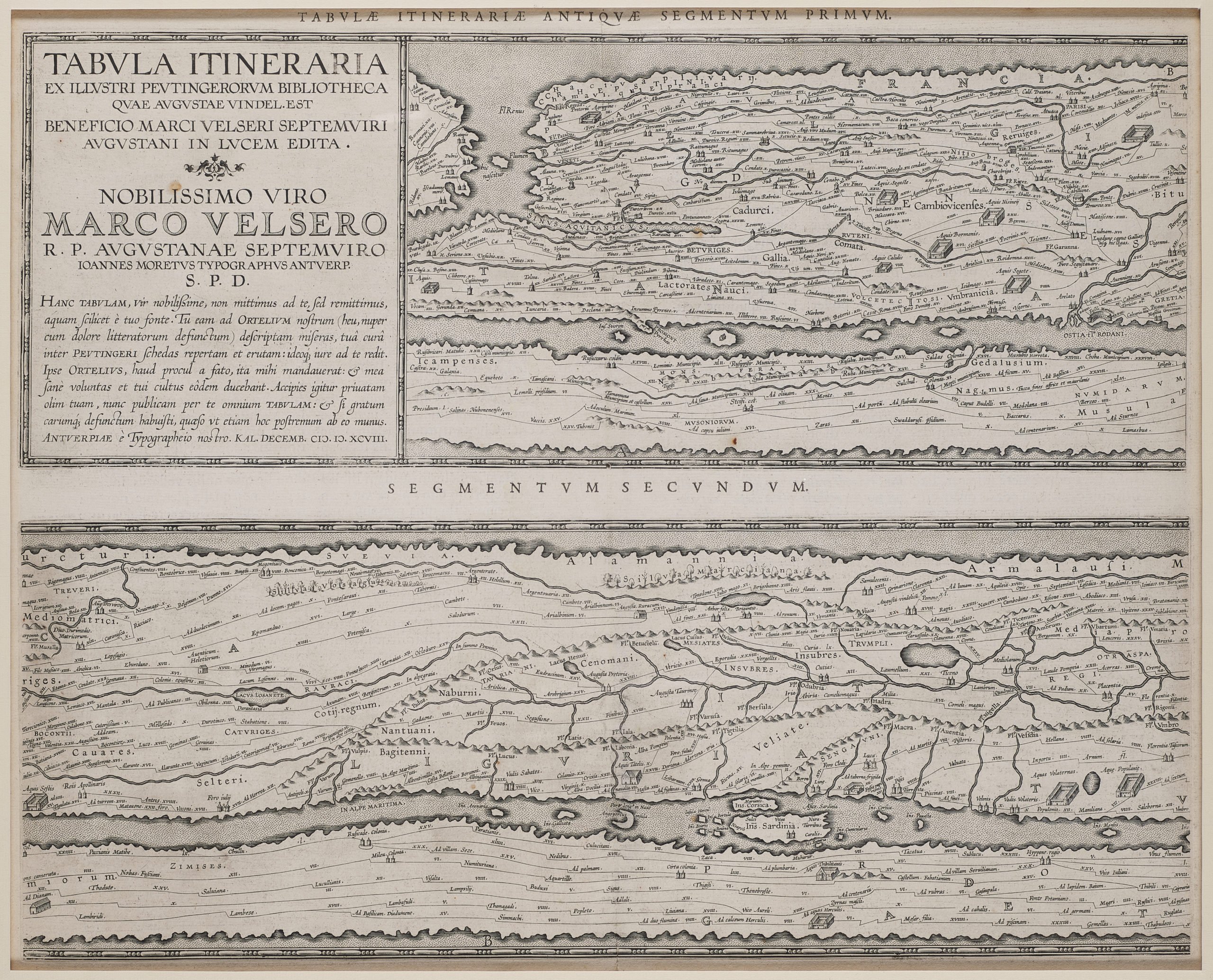
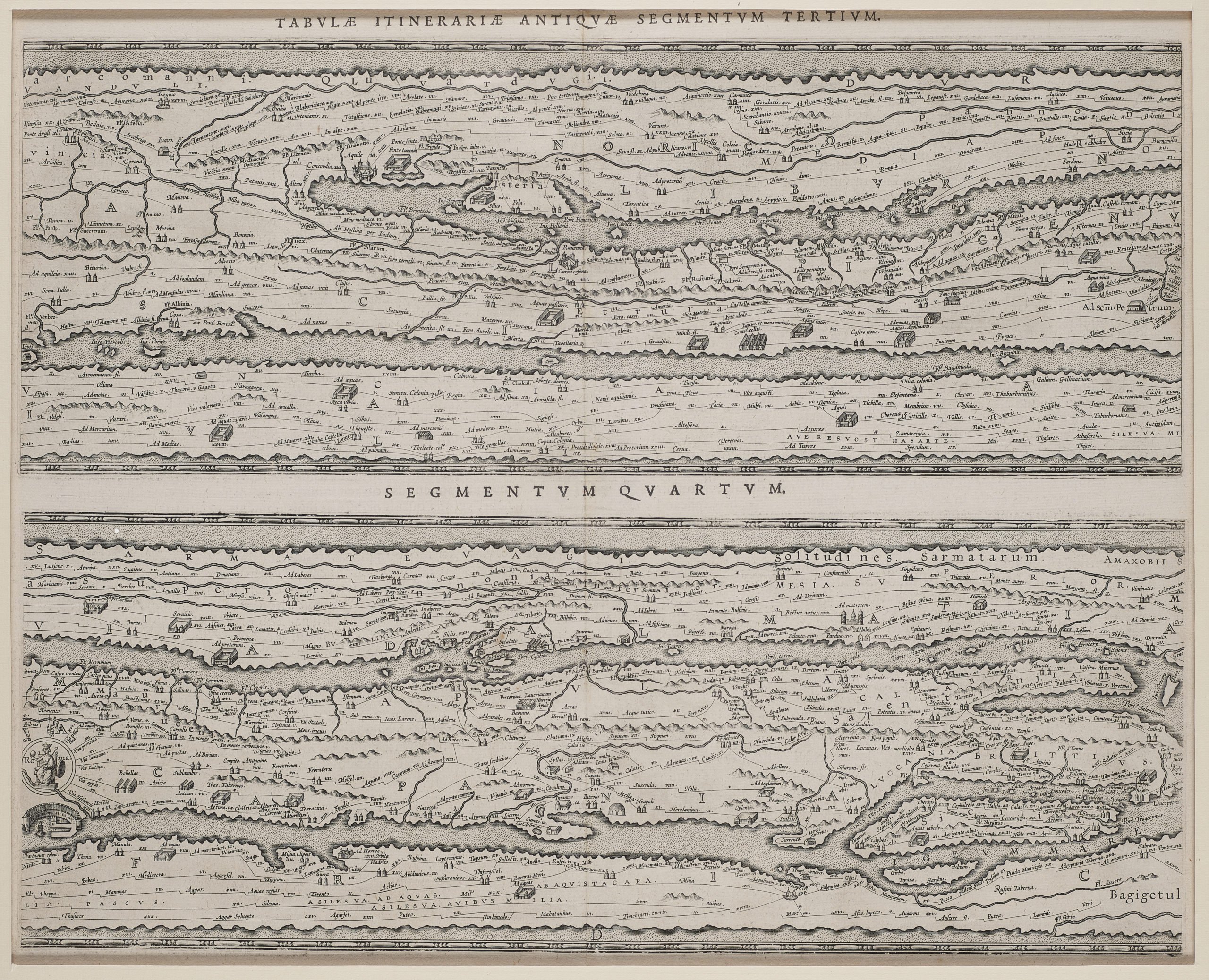
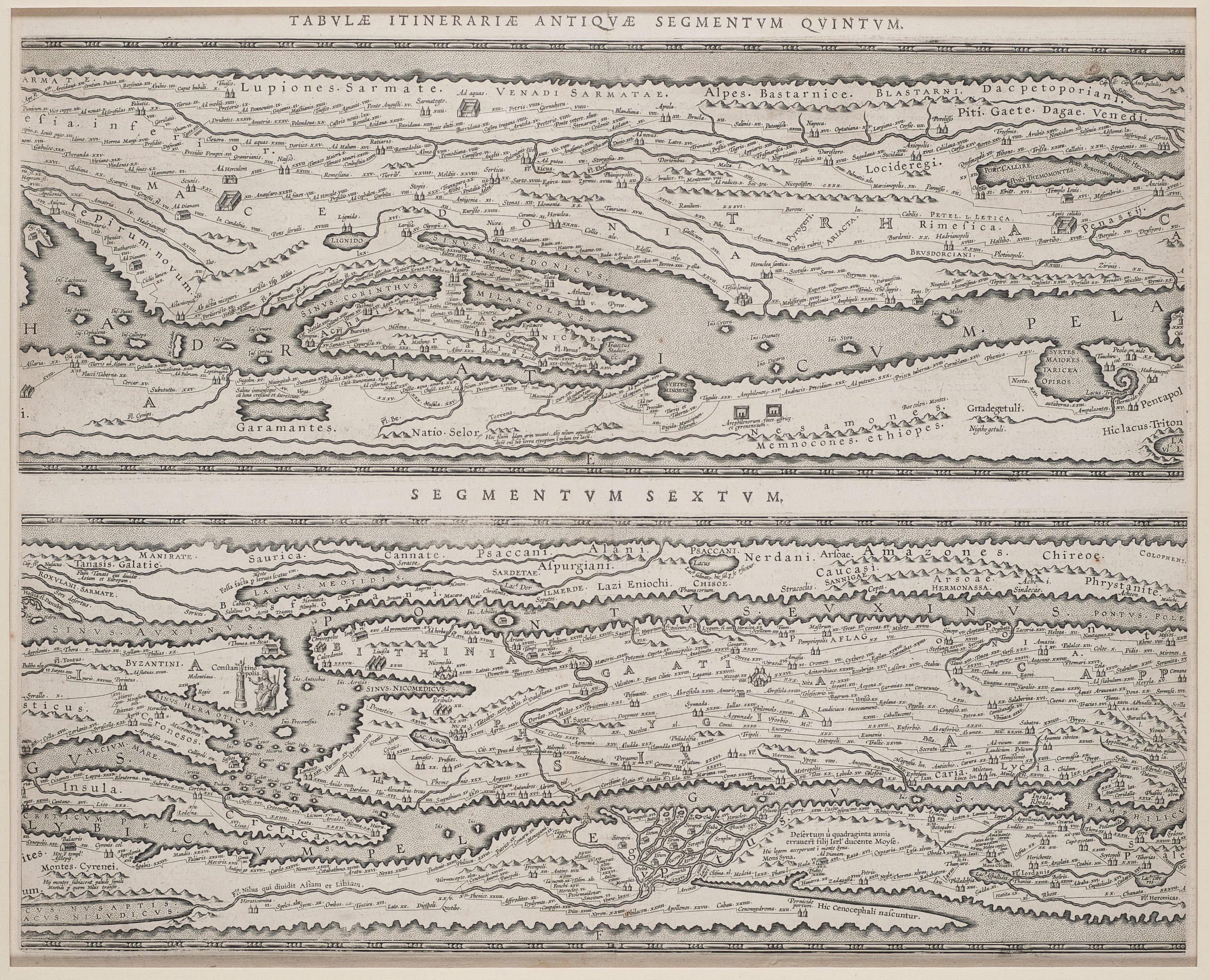
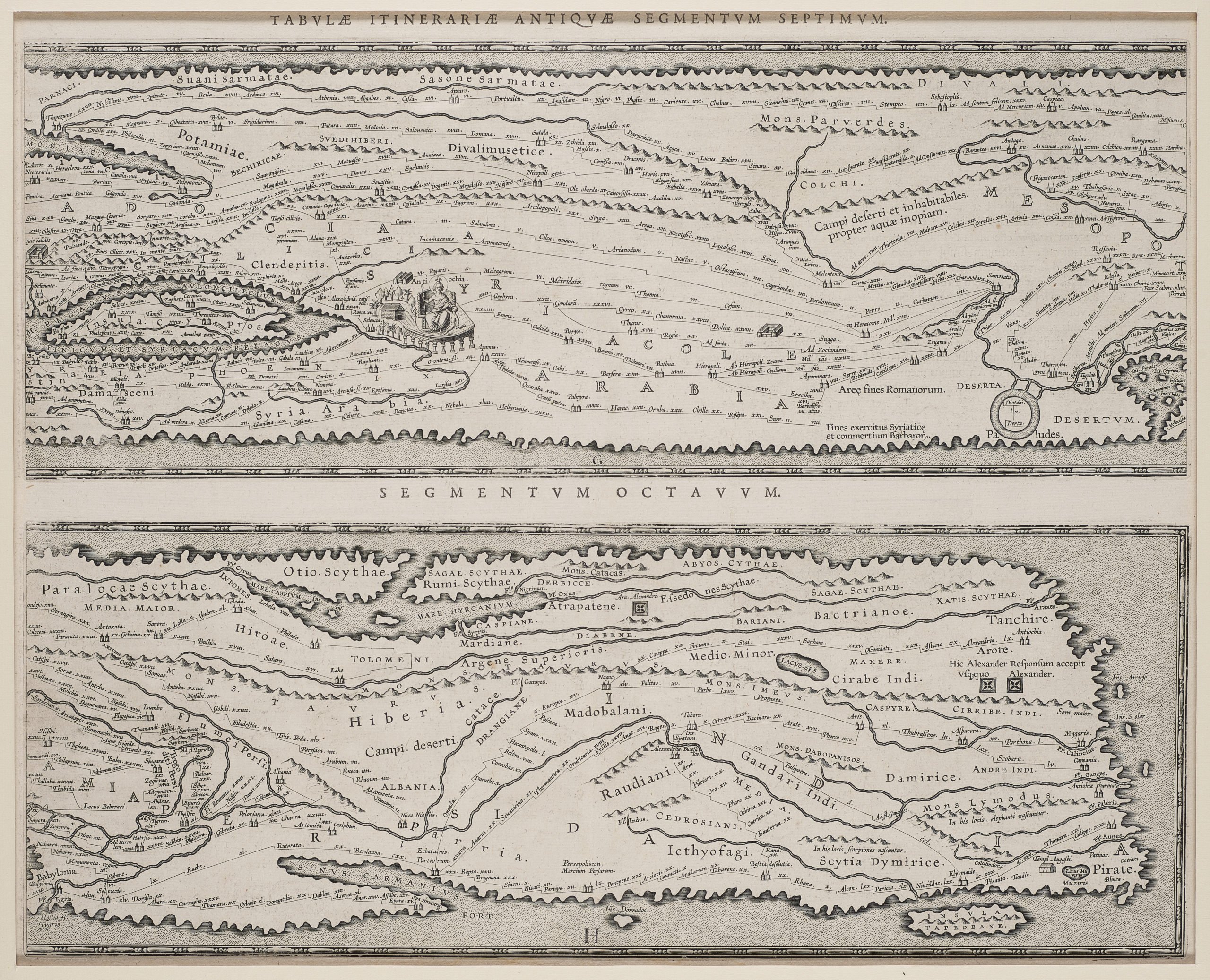
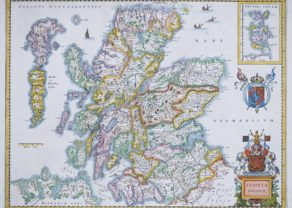
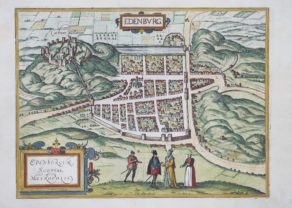
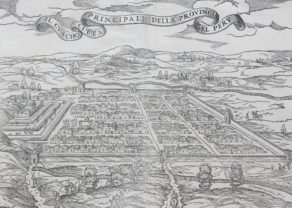
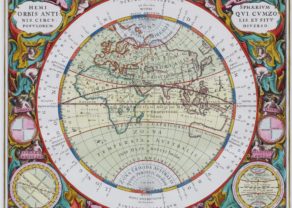
An old world to rediscover
i) Origins of the Peutinger Map
According Meurer the Tabula Peutingeriana or Peutinger map would be a copy of a Roman travel map from the third, fourth or fifth century. Here is the speculation:
In 1265 a Monk, in the German city of Colmar produced a hand written map, on parchment, of the imperial highways and cities of the ancient Roman world. When joined, the result was a scroll measuring 6.75m long & 34cm wide, covering an area from southeast England to present day Sri-Lanka. That map of 1265 was copied from an earlier 4th or 5th century map, itself copied from a 2nd century map that originated from a 1st century BC map from Marcus Vipsanius Agrippa, a Roman General & architect. When Agrippa died in 12BC his map was engraved in marble and displayed in the Porticus Vipsania in the Campus Agrippae area in Rome.
Centuries later, however, a parchment Tabula Peutingeriana was found. This map is now referred to as the original Peutinger map. The map may have been made by a monk of Colmar and was discovered by Konrad Celtis in a library in southern Germany around 1507. He passed it Konrad Peutinger of Augsburg. So, the name of the map simply refers to a temporarily possessor in the early 16th century. Ortelius understood the importance of the card and contacted the descendants of Konrad Peutinger. In 1597 he received a copy of the map made by Marcus Welser (1558-1614). The (original) however Peutinger Map got lost and only re-appeared in 1714. In 1720 the map was bought by Prince Eugene of Savoy. After his death his entire collection of maps and books was sold to the imperial library in 1737, the predecessor of the National Library in Vienna, where the map is still kept.
ii) The original map in detail
The Tabula Peutingeriana covering Britain, Spain and North Africa in the west to the Ganges River in the east. It was originally composed of twelve sheets of approximately 38 cm x 59 to 65 cm and had a total length of 6,82 m.
The first sheet with the Iberian Peninsula and the British Isles got lost. One should not look for a realistic representation of the world, since it presents schematic view of the road network and the stage places in the Roman Empire.
There is no unanimity on the measures: some distances are shown in Roman miles (milia passuum, about 1.5 km), other distances are in Gallic leuga (about 2,200 meters). So, most likely the map had several sources. One of them may have been the third-century Itinerarium Antonini, which lists approximately 3.500 stage locations with distances.
iii) Interpretation by Ortelius and his successors
As early as 1577 Abraham Ortelius, the Flemish cartographer, was aware of the existence of the Peutinger Tables, at that stage owned by Mark Welser. In 1591 Welser had two sections of the scroll printed by Aldus Manutius in Venice. Ortelius thought these inadequate and so commissioned the scroll engraved onto 8 separate plates . Ortelius supervised the engraving of the plates but did not live to see the results.
The Peutinger Map led to seven subsequent interpretations. This is the Ortelius / Bertius version, the oldest, most famous and most important. Ortelius, however, died before he finished this job, but six months later in 1599 John Moretus I did so and publisher Plantin published 250 copies, half size and spread over 8 (2 x 4) printing plates. This is the so-called editio princeps. Only in 1619 and in 1624 Bertius Baltazar Moretus I will re-use the same plates.
Six other editions will follow, from which the version of Johannes Janssonius of 1652 is the most famous. Today, the most frequently used copy of the map is the facsimile of Konrad Miller in 1887. Miller produced a full-color copy of two-thirds of the original size. He thereby recreated the first sheet again and made a hypothetical reconstruction; so Spain, Portugal and England reappeared on the map. The original Peutinger Map (with the addition by Miller) can be consulted online at the Bibliotheca Augustana website. The original version kept in Vienna is not open to the public.
iv) Some details of the Peutinger Map Ortelius
It is not so easy to connect all (Roman) names of contemporary cities to connect; it still gives rise to new interpretations. One notices include the following localities to:
• Part I: Tournai, Nijmegen, Paris, Tongeren and Cologne
• Part II: Corsica, Sardinia, Lucca, Pisa and Milan
• Part III: Florence, Siena, Verona and Ravenna
• Part IV: Rome with Portus, precisely opposite Cartago, and Sicily
• Part V: Greece with the Peloponnese and Athens
• Part VI: Crete, Constantinopel, Nicea, Pergamon, and the Nile Delta
• Part VII: Jerusalem with the Mons Oliveti, Rhodes, Cyprus, Damascus and Antioch
• Part VIII: India to the Ganges with landmarks and delightful references: In these regions, the scorpions are born and in these areas the elephants are born. Right down at the end of the world: Pirate!
Note at the very end the lake of Muziris. Muziris, an ancient harbour, was a key to the interactions between South India and Persia, the Middle East, North Africa, and the (Greek and Roman) Mediterranean region. Current excavations in the village of Pattanam, may suggest that the port was located there, i.e. 25 km North of Kochi (Cochin) near the tip of India’s South West coast.
Provenance: purchased by Marcel van den Broecke, boughtfrom him in in 1998
NEW PICTURES WILL FOLLOW! Do not focus on current pictures; these were made as framed and thus with a lot of shadow. The maps are all in excellent condition with wide margins. New pictures of the maps follow soon.